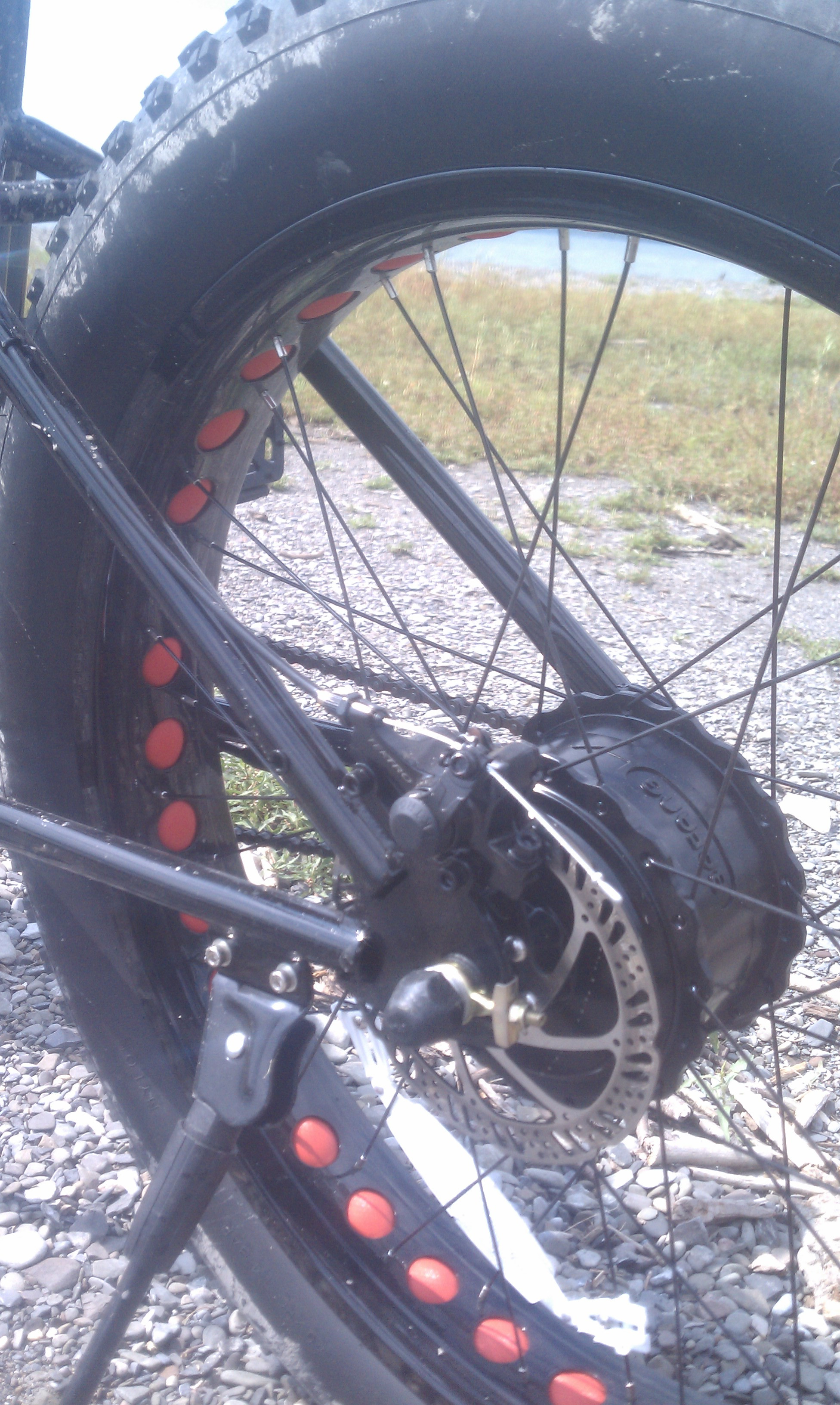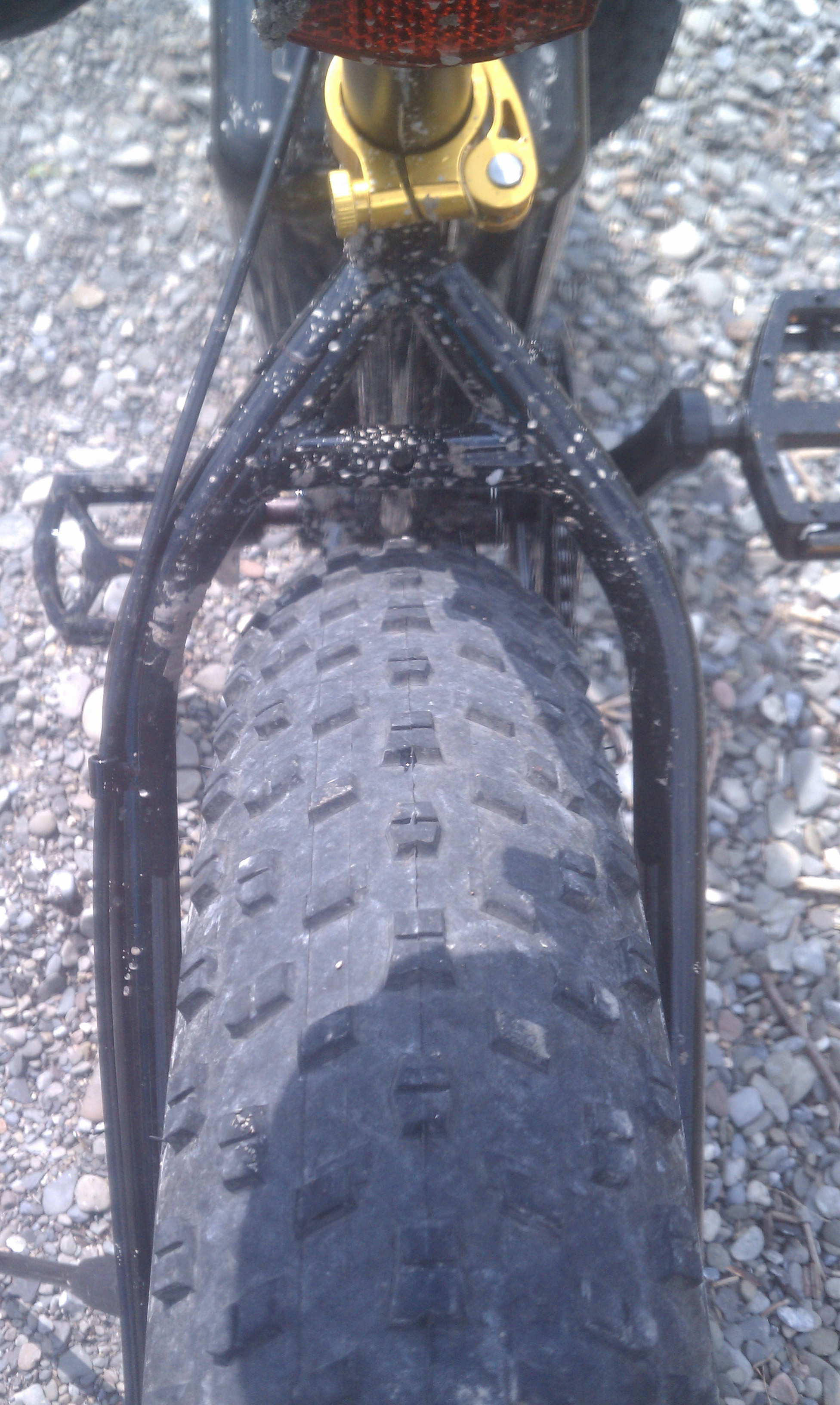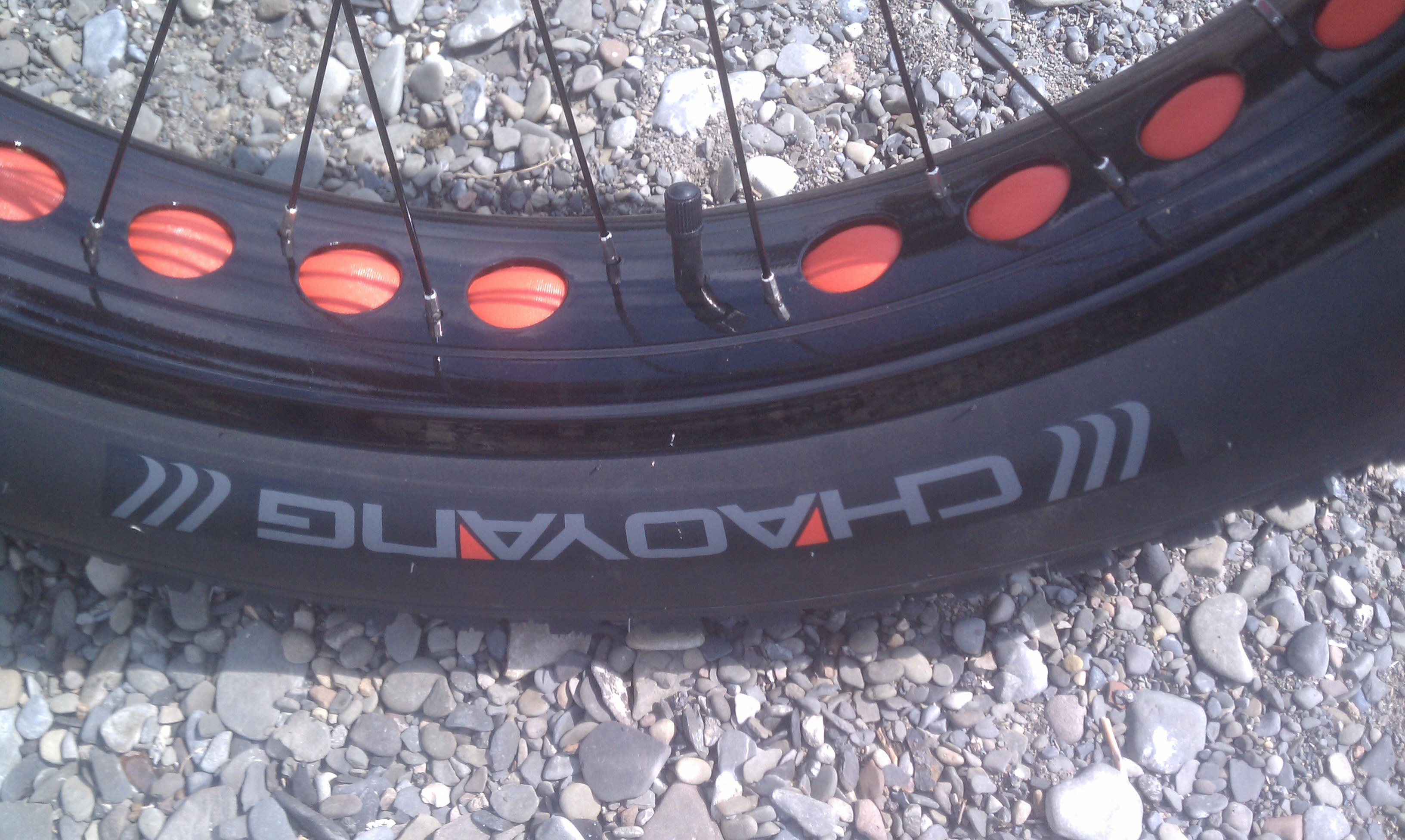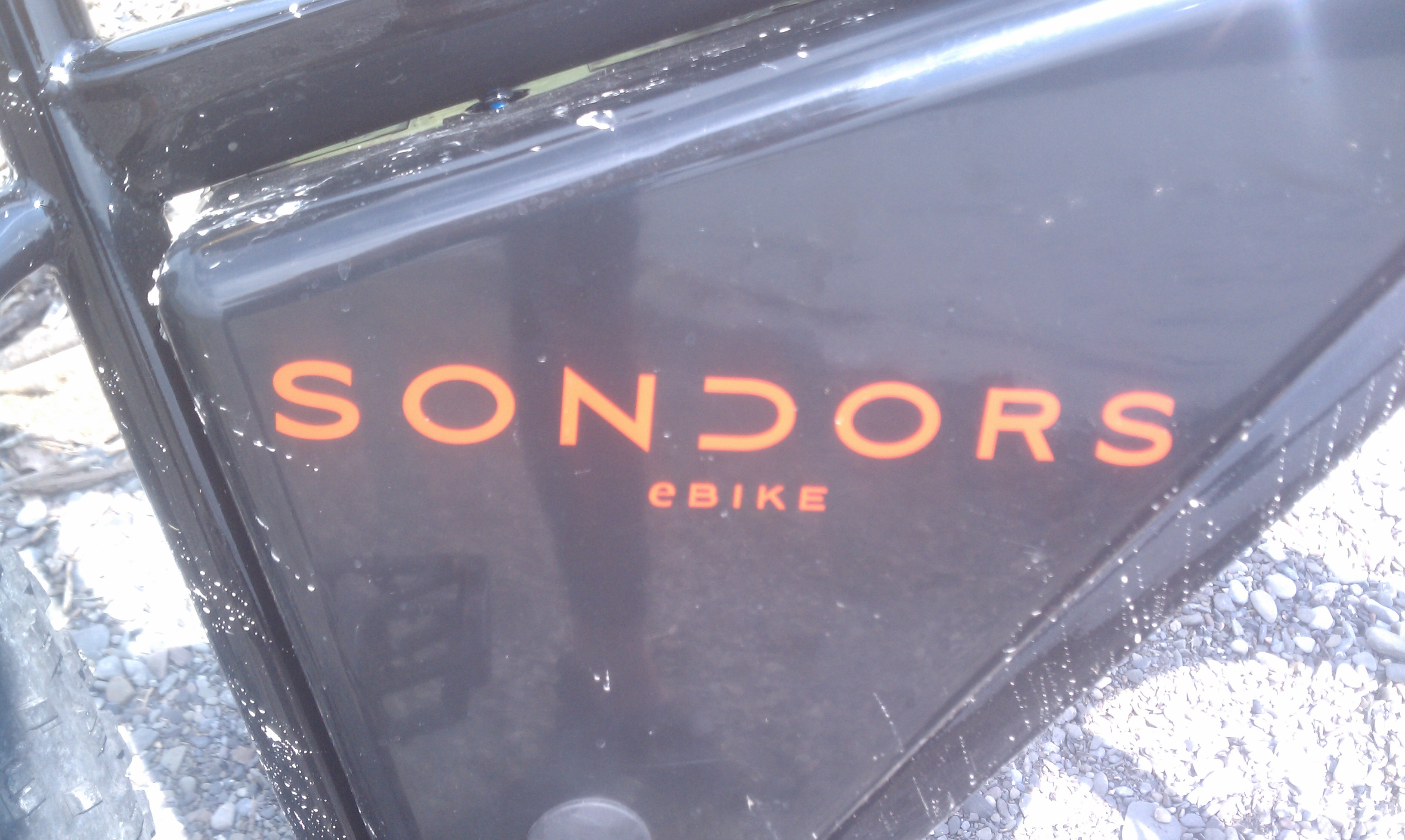The Sondors ebike burst onto the scene as a crowdfunded phenomenon, promising an affordable entry into the world of electric fat bikes. Riding the Sondors ebike with the throttle fully engaged, the initial impression is surprisingly positive. Despite its budget-friendly nature, this bike doesn’t completely disappoint. Its robust styling evokes a Batmobile-esque aesthetic, and it handles rough terrain with tank-like resilience. Riding around, you might catch glances that make you feel like a superhero, projecting an image of fitness that belies the electric assist. However, the Sondors ebike’s strengths are contingent on two key factors:
- A charged battery and functional motor are essential.
- Optimal performance is achieved on level or downhill surfaces, avoiding soft sand.
 Riding the Sondors ebike on a paved road, showcasing its fat tires and distinctive frame.
Riding the Sondors ebike on a paved road, showcasing its fat tires and distinctive frame.
“Alfred, prepare the Bat Bike.”
Riding Experience: Flat Terrain Performance
The first test involved attempting to pedal the Sondors bike for five minutes with the power off. This quickly reveals a significant drawback: it’s far from enjoyable. Most riders encountering a depleted battery will likely opt to walk rather than pedal. Even a slight incline, as little as a 1% grade, renders pedaling a strenuous chore. You’re forced to stand and exert maximum effort. It’s conceivable that many users, accustomed to electric assistance, might resort to calling for a ride rather than pushing this nearly 60lb bike home. The gearing is clearly optimized for motor assistance, becoming comfortable only at speeds of 15mph or higher. The Sondors ebike is fundamentally designed to be ridden with the motor engaged.
This electric bike is at home on the beach.
In contrast, my single-speed fat bikes are geared for comfortable pedaling even without motor assistance. This typically involves a 32T front chainring and a 22T cog, a 10-tooth difference. The Sondors ebike, however, appears to have a difference exceeding 24 teeth. This means my single-speed fat bikes’ tires rotate 2.5 times faster per pedal revolution than the Sondors. For frequent single-track riders, weight and proper gearing are paramount. At 59lbs, the Sondors ebike is less than ideal in both aspects.
 Close-up of the Bafang 350W motor, highlighting its size and robust construction.
Close-up of the Bafang 350W motor, highlighting its size and robust construction.
The 350W Bafang motor is substantial for its rating, suggesting durability, though potential issues could arise from over-powering it with battery and controller upgrades. The frame, kickstand, and dropouts are notably robust.
Motor and Pedal Assist System
Activating the motor transforms the experience. The Sondors ebike includes a Pedal Assist System (PAS), estimated to deliver around 100 Watts to the 350Watt Bafang geared hub motor when pedaling. This PAS provides enough assistance to match the speed of a regular bike with comparable effort. The throttle unleashes significantly more power. From a standstill, the clutch might audibly strain under full throttle. Once moving, the motor performs admirably, easily reaching approximately 20 mph on level ground or slight declines. It’s likely this Bafang motor is tuned for speed rather than low-end torque.
 Detailed view of the bottom bracket area, showcasing the PAS magnets positioned near the chainwheel.
Detailed view of the bottom bracket area, showcasing the PAS magnets positioned near the chainwheel.
The bottom bracket with PAS magnets positioned for pedal assist functionality.
The Sondors logo adds a stylish touch, reminiscent of something The Flash might ride.
Hill Climbing Limitations
Significant challenges emerge when encountering inclines. Grades under 4% are manageable with some pedaling assistance if you maintain momentum. However, steeper inclines demand maximum effort, negating the “effortless cheating” sensation of electric assist. Attempting 8% grades resulted in the bike stalling, regardless of pedaling input. This experience is amplified for heavier riders. For areas with hills, considering a mid-drive system might be more appropriate. Mid-drive systems, like the BBS02 equipped on “The Reaper,” demonstrate superior hill-climbing capabilities even on steep inclines.
Estimating road grades can be tricky. Most paved roads are graded at well under 10%. A 30% grade is very steep, comparable to stairs and difficult to walk.
Off-Road and Single-Track Trails
Venturing onto single-track trails with the Sondors ebike proved problematic. After only 20 feet, the bike stalled on a minor incline, necessitating a turnaround and walk back. For off-road riding, a lighter, more powerful mid-drive bike like the “Duh Banana Bike” is recommended. Weighing 41lbs without the battery, it offers superior performance for trail riding.
Tires and Ride Quality
The tires are noticeably heavy, with a tread pattern similar to the Panaracer Fat B Nimble, a favored tire for its value. The tire weight contributes to significant rotational momentum, even creating a gyroscopic effect at higher speeds, reminiscent of the Walmart Beast with a Stokemonkey motor. Tires profoundly influence fat bike ride quality. Converting to a tubeless setup can reduce weight and enhance ride comfort. Ultralight tubes can also save weight. At around 10psi, the tires exhibit some self-steer, but it’s not excessive. Maximizing tire pressure to 20psi is advisable for extending range.
 Close-up of the Sondors ebike tire, showing the tread pattern and ample clearance within the frame.
Close-up of the Sondors ebike tire, showing the tread pattern and ample clearance within the frame.
Tires feature a good tread pattern and provide sufficient clearance for larger tire upgrades if desired.
Battery and Range
The plastic battery box, shaped like a triangle, opens from the side and has minimal ports with rubber stoppers for weather protection. One port conceals the on/off switch, the other the charging port. While the design is aesthetically pleasing, the rubber plugs seem prone to being misplaced. A tethered design would be preferable. An additional on/off switch is located near the handlebar battery meter. There’s no apparent way to disable the PAS system; however, removing the PAS magnet ring might be possible, though controller functionality could be affected. Considering the original early adopter price of $499 plus $193 shipping, some compromises are expected.
The Sondors ebike crowdfunding campaign generated significant buzz and strong reactions within the online e-bike community. Coverage of the Sondors ebike began at its inception, but the intense debate led to a decision to cease coverage until a review was possible. Reports emerged regarding the campaign’s financial aspects, including bounced checks and unusual financial situations surrounding the founder.
The hidden charging port is protected by a rubber plug to keep moisture out of the electronics.
Is the Sondors Ebike a Good Choice?
Assessing the Sondors ebike involves considering its value proposition. While the founder, Ivars Sondors, faced scrutiny regarding misrepresentations during the campaign, he ultimately delivered the bikes. Range testing wasn’t conducted, but realistic expectations are crucial. Throttle-heavy riding likely yields under 10 miles of range, while PAS usage on level terrain might approach 20 miles. [Update: User feedback suggests ranges closer to or exceeding 30 miles are achievable.] However, using PAS on the Sondors ebike feels less efficient than pedaling a lighter, non-electric bike. The advertised 50-mile range is unrealistic for most users. For extended range, upgrading to a 13.6Ah water bottle battery from Luna Cycle is a viable option.
The use of the pseudonym “Storm” for the campaign launch likely contributed to its viral success. The real name, Ivars Sondors, might have deterred potential backers due to past controversies. Ultimately, Ivars Sondors’ venture is a mix of successes and missteps. The long-term outcome remains to be seen.
Primary hidden kill switch location, unlikely to be found by bike thieves.
While a refund was obtained initially, friends who received their bikes provided further insight. For personal needs, a 59lb bike with limited hill-climbing ability isn’t ideal. However, the Sondors ebike does cater to specific user groups:
Who is the Sondors Ebike For?
- Burning Man Attendees: Its playa-resistant design and affordability make it suitable for Burning Man conditions.
- Beach Riders: Ideal for hard-packed beach cruising, though unsuitable for soft sand.
- Flat Commuters: Practical for short, flat commutes (under 8 miles).
- Superhero Enthusiasts: Its styling lends itself to fun, attention-grabbing rides.
Who Should Avoid the Sondors Ebike?
- Riders Concerned About Battery Depletion: Pedaling without power is difficult.
- Hill Climbers: Struggles significantly on inclines.
- Single-Track Riders: Too heavy and unwieldy for serious trail riding.
 Close-up of the Schrader valve on the tire and the rim, showcasing the quality of components for the price point.
Close-up of the Schrader valve on the tire and the rim, showcasing the quality of components for the price point.
Schrader tubes are standard at this price point, but the rims and tire quality appear to be surprisingly good.
The future viability of Sondors’ business model depends on delivering promised bikes and managing financial obligations, including potential lawsuits and taxes. The financial sustainability remains uncertain given the low profit margin per bike.
Go Sondors.
 The Sondors logo on the bike frame, emphasizing its distinctive ebike branding.
The Sondors logo on the bike frame, emphasizing its distinctive ebike branding.
The logo is visually appealing but clearly marks it as an ebike. Some may prefer stealthier battery solutions like a battery backpack.
Despite challenges, Ivars Sondors achieved unprecedented success, selling $6,100,000 worth of ebikes, representing a significant portion of the 2015 ebike market. This success was driven by affordability and appealing aesthetics. Price remains the primary concern for many ebike consumers, and Sondors offered a complete bike at a price comparable to individual components.
The single-speed freewheel design is unusual.
US dealers must recognize the changing market dynamics. The future of ebikes isn’t solely in high-end, expensive models. Affordable electric fat bikes with good performance, like the $765 “Duh Banana Bike,” are the emerging trend. The ebike market needs to adapt to this shift.
Potential Upgrades for Your Sondors Ebike
The Sondors ebike has room for significant improvement. Upgrading to a 1000W direct drive motor from Luna Cycles can boost power considerably. For extreme power, a 3000W Mxus motor build is possible. These upgrades, combined with a 52v battery, can transform the Sondors into a much more capable machine.
Building an Ultimate Sondors Street Machine
For a truly high-performance Sondors ebike, consider a Lightning Rods big block kit, Lyen 18 Fet Controller, Rohloff 14-speed IGH, and a Luna Cycles 60v battery. While costly, this transforms the bike into a hill-climbing, high-speed machine. A more budget-conscious approach involves a Nexus 3 IGH for cost savings.
 Close-up of the seat post clamp, described as being of unexpectedly high quality.
Close-up of the seat post clamp, described as being of unexpectedly high quality.
The seat post clamp is surprisingly well-made.
If owning a Sondors ebike, initial upgrades could involve overvolting the system with a 48v or 52v battery, though controller compatibility is a risk. For enhanced hill climbing, amperage is key. This requires upgrading the battery and controller. Replacing the motor with a higher-power option like the 10T FatMAC from em3ev, along with a larger battery and controller, can significantly boost performance.
Dealers should consider offering Sondors upgrade kits, including compatible batteries and motors. For hill-climbing prowess, mid-drive kits like the BBS02 or Lightning Rods, paired with an IGH, are recommended, requiring some bottom bracket modification.
The seat incorporates rubber elastomers, similar to Thudbuster, providing good comfort.
The electric fat bike market is poised for expansion, but entry-level bikes like the Sondors, in their stock form, may not fully satisfy users long-term due to power and range limitations. For a comparable price and weight, building a DIY ebike using a Walmart Dolomite and a BBS02 kit offers dramatically improved performance and hill-climbing ability.
The era of affordable and capable electric fat bikes is dawning. It’s up to the market to realize this potential.
Ride On.
Comments are closed on this article.
